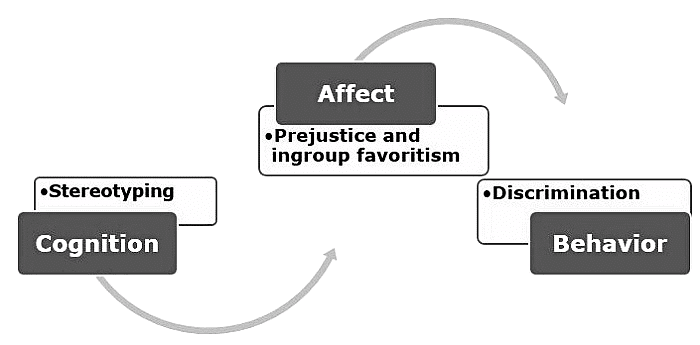Formation of stereotypes and prejudices | Psychology for UPSC Optional (Notes) PDF Download
Introduction
Stereotypes and prejudices play significant roles in perpetuating and deepening social exclusion. While prejudices can be positive or negative, biases can be held consciously or unconsciously by individuals. Stereotypes, unlike generalizations, are preconceived notions about a group's members, encompassing various aspects such as appearance, behavior, and aptitude. This article explores the meaning and formation of stereotypes and prejudices, delving into their impact on individuals and society.
Meaning Formation of Stereotypes and Prejudices
Unproven prejudices often emerge from personal examples and provide insights about particular groups. Similar to cliches and caricatures, stereotypes oversimplify and exaggerate, leading to sweeping and inaccurate assumptions about entire populations. Stereotypes involve mental images depicting how one group is perceived as different from another. It is crucial to note that individuals can recognize cultural stereotypes and hold mental representations without subscribing to them, experiencing bias, or fully comprehending their influence on decision-making and actions. Some argue that prejudices and stereotyping serve as adaptive processes that help people navigate the complexities of the real world.
Examining Stereotypes from Multiple Disciplines
Psychologists explore various aspects of stereotypes, including individuals' experiences with group dynamics, communication patterns, and intergroup conflicts. Sociologists study class relationships, identifying how conflicts, inadequate parenting, and limited social and emotional development contribute to the formation of stereotypes. Two primary reasons contribute to the persistence of stereotypes: schematic processing, which reinforces preconceived notions when group members align with them, and the effectiveness of prejudice, which renders logical arguments against stereotypes ineffective. Emotional responses pose greater challenges to overcome than rational discourse.
Illusory Correlation and Stereotypes
The formation of stereotypes often stems from an illusory correlation, which involves drawing false conclusions about the connection between two events. People tend to overstate the frequency with which two improbable events occur simultaneously due to the tendency of anomalies to stand out when observed in clusters. As encoding becomes more specific and efficient, stronger ties appear to form between events, reinforcing the development of stereotypes.
Upbringing and Socialization
While socialization plays a role in the formation of stereotypical attitudes, it is not the sole determinant. There is no direct correlation between exposure to similar stimuli and the development of shared stereotypes. This suggests that prejudice is contagious as group members are influenced to adopt similar attitudes, leading to generalizations about other groups. Biases are taught and learned over time, with parents, teachers, and the media often shaping individuals' prejudices during their formative years. As societal values change, stereotypes based on social values may also evolve.
Gender Identity and Prejudice
Transgender and non-binary individuals often face prejudice due to their deviation from stereotypical gender roles. Discrimination can manifest in the refusal to use preferred pronouns or denying a person's identified gender. Calling someone by a name other than their preference, particularly after multiple explicit requests, is also discriminatory.
Nationalism and Stereotyping
Nationalism, which emphasizes a shared identity and internal unity within a group, often fuels national independence or separatism. While nationalism promotes the idea of cultural unity, it can mask inequalities based on factors like race and socioeconomic status within a country.
Activation of Stereotypes
Numerous studies demonstrate the inevitability of stereotyping. Both highly and less prejudiced individuals can be triggered into using stereotypes merely by being in the presence of a member of a stereotypical group or a symbolic representation thereof. Subtle references to racial stereotypes can elicit stereotypical thinking and even hostile attitudes, irrespective of one's level of prejudice.
Behavioral Outcomes
Empirical evidence reveals negative attitudes held by participants toward the elderly, even after taking tests where words associated with age stereotypes were jumbled. Participants primed with the age stereotype demonstrated slower walking speeds compared to the control group. The stigma faced by older individuals can further affect their self-perception, leading to diminished self-esteem.
Inter-Relation between Evaluations and Stereotypes
The relationship between evaluations and stereotypes can vary depending on how the valence of the attribute captured in the stereotype aligns with the individual's own evaluations. For example, the extent to which the stereotype "African Americans are more physical than mental" correlates with implicit evaluations of African Americans depends on how positively or negatively a person evaluates the attribute "physical" compared to "mental."
Conclusion
Implicit and explicit biases are influenced by underlying representations. Stereotypes, as substitutes for prosodic values associated with a group, impact implicit evaluations of that group. The valence attributed to a group influences implicit generalizations about that group. Implicit evaluations are based on overt evaluations, and textual attributes associated with a group can influence inherent evaluations. Despite the common belief that biases and stereotypes are unrelated, evidence suggests their interplay. Understanding the formation and impact of stereotypes and prejudices can help address and mitigate their negative consequences in society.
|
165 videos|205 docs
|



















